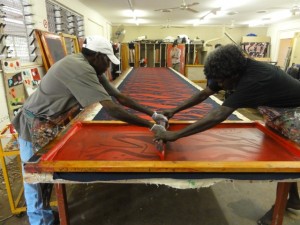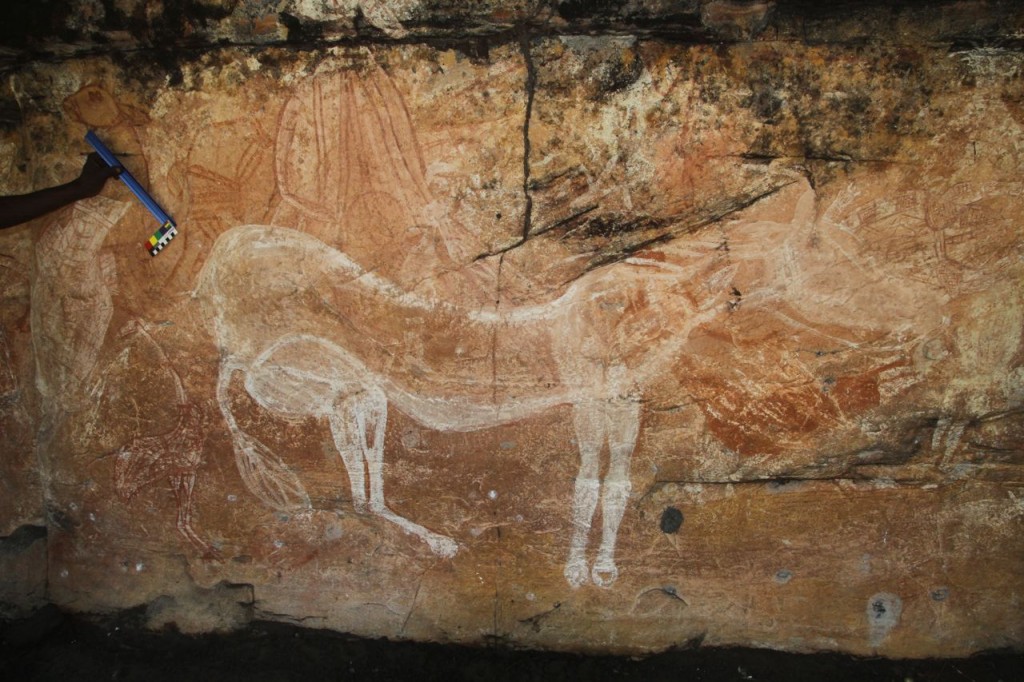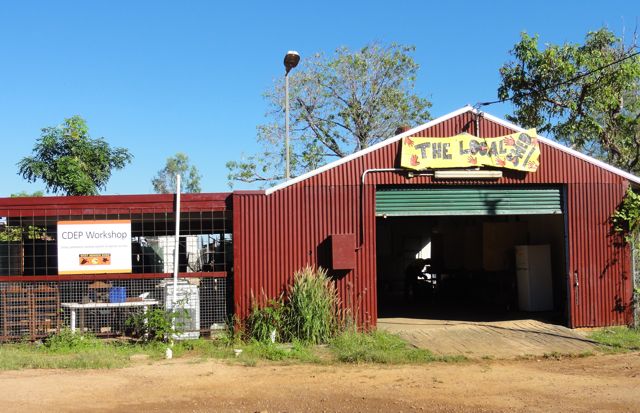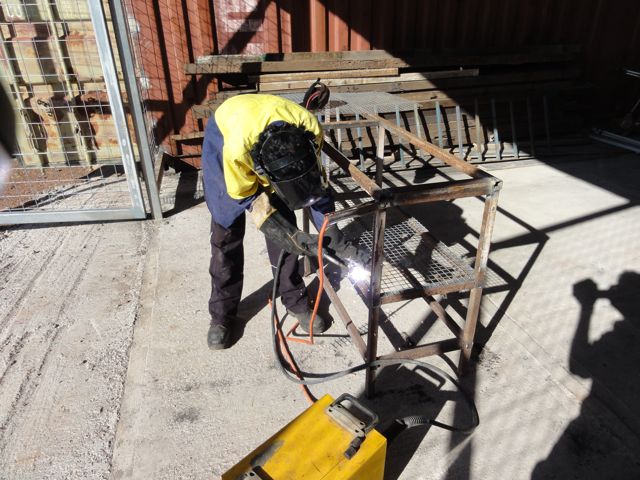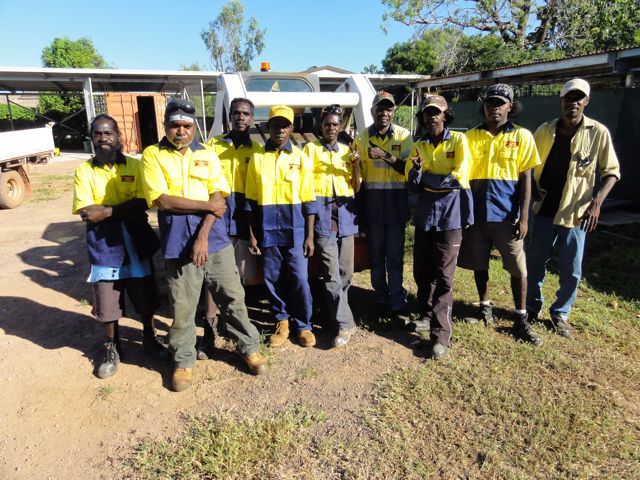Injalak Screenprinting
The famous Injalak screenprints at Gunbalanya are back in production. Isaiah Nagurrgurrba talks about how it all started.
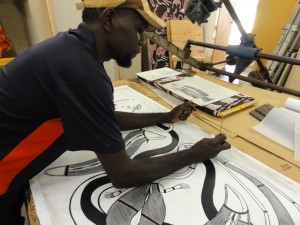 Kabirriyingkibimmarnbun 'they draw a design first'
Kabirriyingkibimmarnbun 'they draw a design first'
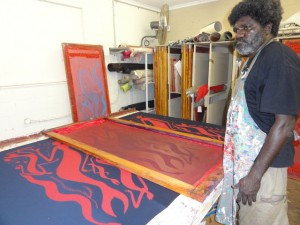 Nakangila kahkurrme screen 'Nakangila places the screen'
Nakangila kahkurrme screen 'Nakangila places the screen'
Isaiah screenprinting text <— Konda yibiddjuyme ba yiwokbekkan. (click the icon to hear the story).
[00:00:00.00]
First nawu ngarrbendjawam nawu...
At first we asked about
[00:00:02.13]
konda ngarridurrkmirri
here where we work
[00:00:03.17]
screen printing... aa nawu dabbarrabbolk ngarrbendjawam kamak ngundimarnemang design yiman Nawamud
and screen printing... we asked our old people if it was OK to use their designs— people such as Nawamud
[00:00:10.24]
Thomson, Kodjok, and Wamud... Wamud namekke ngarrbendjawam bu design bedberre
Thomson, a man of Kodjok subsection, and also Wamud... that Wamud we asked them about permission for designs
[00:00:18.18]
kamak ngundimarnemang (dreya???)
we asked if it was OK to use traditional designs
[00:00:20.12]
ngarrimyolyolmeng bu namekke print ngarriyime kunmadj
We came and explained how these would be printed on cloth
[00:00:23.22]
material... 8 metres table... wanjh Balanda kabirrimre kabirrinan name kunmadj
on material on a table 8 metres long... and then non-Aboriginal people would come and see these prints
[00:00:29.04]
kabirribayahme nameke mak artist
and that they would buy them and the artist
[00:00:31.17]
royalty yiman name kamang nuyeke
would receive a royalty for his design
[00:00:34.08]
mani,
money
[00:00:35.02]
nawu kunmadj ba karengere art centre kamarnbun more mani
and that as this continued it would make money for the art centre
[00:00:40.15]
ba ngarribayahmeken njamed ink use ngarriyimi
so that we could buy things such as the inks used in the printing
[00:00:43.07]
ngalengarre manu screenprinting-ken manekke mani ngarrimarnbun
and all the other things we need to do the screen printing and to make money
[00:00:46.20]
ngarrimarnbun T-shirt, fabric
(by selling) T-shirts we make and fabrics
[00:00:50.20]
en more birridjaremi nawu kabirridjare bedberre design kabirrimarnbun bad
and then more people wanted to use their designs but
[00:00:55.12]
make sure ngarrbenmarneyime minj mak djang ngurribimbun bu njamed wardi
we were told (other artists) not to paint sacred restricted designs, otherwise...
[00:00:59.22]
minj karridurren bad kandiyolyolme kadberre dabbarrabbolk.
well it wouldn't mean we would argue over it, but it's just what our elders explained to us.
 Bonj, birriyakwong! The finished product.
Bonj, birriyakwong! The finished product.
Bonj
That is all.

